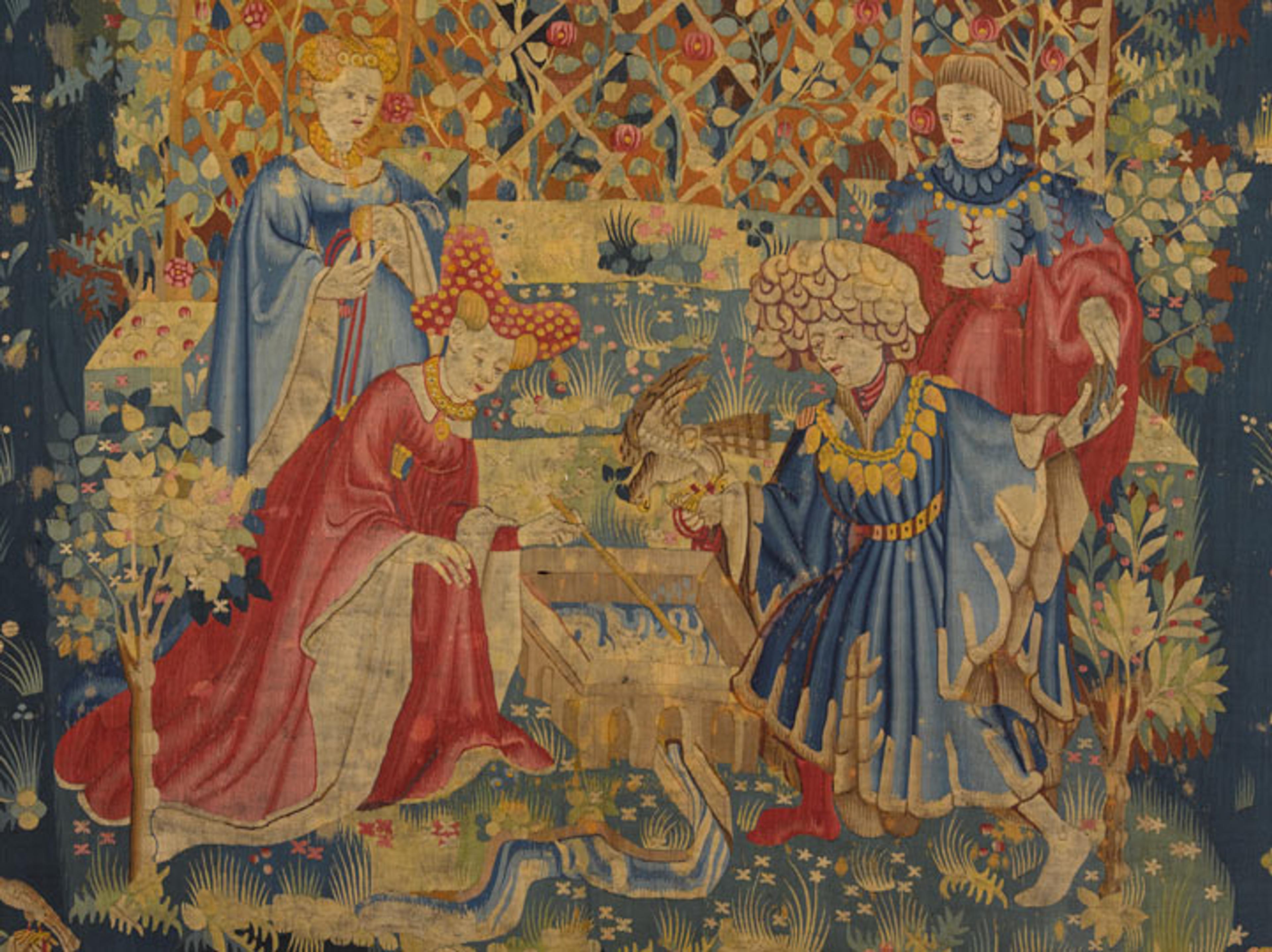A red-tailed hawk showing off for visitors in the Cuxa Cloister. Video by the author
«A very unexpected and distinguished guest arrived at The Met Cloisters last Thursday afternoon: a red-tailed hawk alighted on the Cuxa Cloister fountain and lingered for about 20 minutes. New York City was in the midst of a heat wave, and this hawk was very clearly in need of a respite. Sightings of red-tailed hawks are common in New York City, and they are often seen circling overhead here in northern Manhattan. Hawks, along with falcons, were—and remain—commonly trained to hunt wild game. The sight of the hawk splashing around in the Cuxa fountain brought a 600-year-old image depicted by medieval weavers to life for visitors and staff.»
The Met Cloisters collection includes an early 15th-century tapestry depicting courtly figures in the process of training a falcon. A man and woman, along with their attendants, are in the center of the tapestry on either side of a basin of water. The gentleman holds a falcon while a lady stirs the water with a stick, encouraging the falcon to bathe.

The Falcon's Bath (detail), ca. 1400–1415. South Netherlandish. Tapestry with wool warp and wool wefts; Overall: 137 1/2 x 145 1/2 in. (349.3 x 369.6 cm). The Metropolitan Museum of Art, New York, The Cloisters Collection, 2011 (2011.93)
Medieval falconry treatises describe the techniques for training birds of prey to hunt, including bathing. The most important falconry manual, De Arte Venandi cum Aves (On The Art of Hunting with Birds), was written in the 1240s by Frederick II Hohenstaufen, Holy Roman Emperor and King of Sicily (1194–1250). The chapter devoted to the falcon's bath recommends bathing to calm an agitated bird, to familiarize it with human contact, to maintain its health, and to cool it off. Although our visitor was a red-tailed hawk rather than a falcon, it certainly dispelled any doubts I might have harbored about how tempting the falcon in the tapestry might have found a bath.